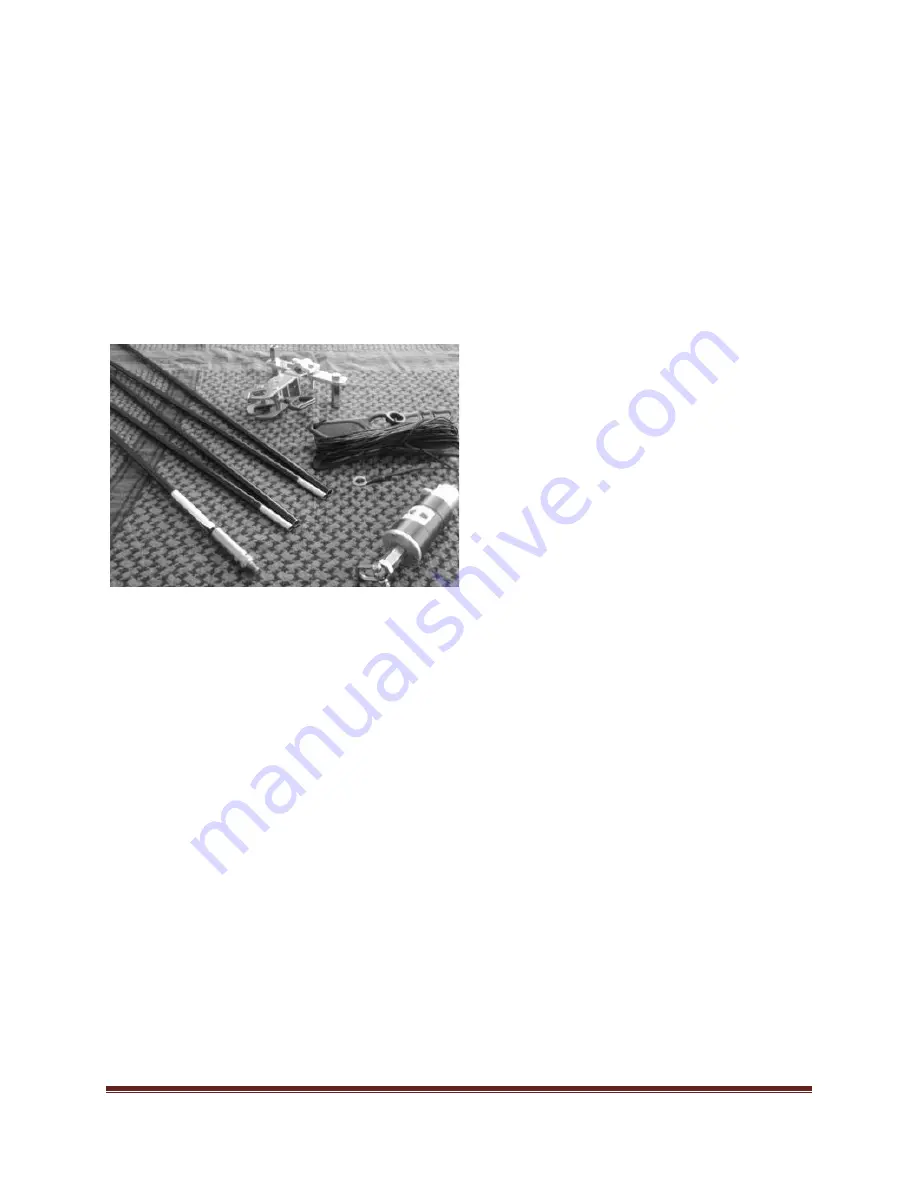
CHA MPAS
Page 4
Introduction
Thank you for purchasing and using the Chameleon Antenna
TM
High Frequency (HF) Modular Portable Antenna
System (CHA MPAS). The CHA MPAS is designed to be the most versatile, high performance, and rugged portable /
manpackable HF antenna available using the “LEGO® BLOCK” approach, as described by Survival Tech Nord. The
core components of the antenna system, see plate (1), are: a CHA HYBRID-MICRO portable base, 60 feet of wire, a
10’8” military-style collapsible whip antenna (CHA MIL WHIP), and a clamp-style antenna mount (CHA JAW
MOUNT). Available system options
(sold separately)
include, a 6’6” collapsible extension (CHA MIL EXT), rugged
counterpoise kit, and coaxial cable assembly with integrated Radio Frequency Interference (RFI) choke. The
components of the CHA MPAS provide a continuum of portability and performance to meet your communications
requirements.
Plate 1. MPAS Core Components.
The integral broadband impedance matching
network transformer of the CHA HYBRID-MICRO
allows broadband antenna tuning. The antenna will
operate from 1.8 - 54 MHz (including 160m – 6m
amateur bands) without any adjustment with a wide
range antenna tuner (the shortest configuration has
limited performance below 3.5 MHz). The CHA
MPAS is perfect for Emergency Preparedness and
Survival Communication. It is also the antenna for
hams that enjoy camping, hiking, biking or other
types of outdoor recreation which require
communication gear to be both effective and highly
portable. The CHA MPAS is configurable to facilitate
Near-Vertical
Incident
Sky
wave
(NVIS)
communication and is totally waterproof. The CHA
MPAS requires a wide range antenna tuner or
coupler. Antennas built by Chameleon Antenna
TM
are versatile, dependable, stealthy, and built to last.
Please read this operator’s manual so that you may
maximize the utility you obtain from your CHA
MPAS.
HF Propagation
HF radio provides relatively inexpensive and reliable local, regional, national, and international voice and data
communication capability. It is especially suitable for undeveloped areas where normal telecommunications are
not available, too costly or scarce, or where the commercial telecommunications infrastructure has been damaged
by a natural disaster or military conflict.
Although HF radio is a reasonably reliable method of communication, HF radio waves propagate through a
complex and constantly changing environment and are affected by weather, terrain, latitude, time of day, season,
and the 11-year solar cycle. A detailed explanation of the theory of HF radio wave propagation is beyond the
scope of this operator’s manual, but an understanding of the basic principles will help the operator decide what
frequency and which of the CHA MPAS configurations will support their communication requirements.
HF radio waves propagate from the transmitting antenna to the receiving antenna using two methods: ground
waves and sky waves.
Ground waves are composed of direct waves and surface waves. Direct waves travel directly from the transmitting





































